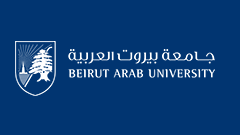Abstract
Language, like any object in this world, is susceptible to various changes. These changes, visible or invisible, can be due to a natural development, or to unexpected external reasons. The language is also exposed to a natural and continuous mutation, and to a mutation due in general to external reasons. The metamorphosis that the language undergoes can be studied from three points of view: the close relationship between language and identity; the ideological side in the historical evolution of the language; graphic and phonic mutation in the language. Who says "language" says "identity" because these two elements constitute an important part in the existence, the personality even the reasoning of the individual. "Who touches my language, touches my identity", a statement that we often hear even by immigrants who do not speak well the language of their parents. Through the history of the French language, we can understand the external reasons that lead to the perceived or unnoticed metamorphosis of the language: political conflicts, wars, invasions, immigration, commercial transactions, science, translation, the political weight of the country, etc. The first linguistic element by which linguistic metamorphosis begins is the phonic side. The pronunciation of words is very fragile in front of the elements that cause the mutation of the language. This is why we notice that the change of the language begins with the pronunciation, passing through the orthography ending with the syntactic and the morphology.
Keywords
Langue, mutation, métamorphose, idéologie, identité, grammaire, histoire
Recommended Citation
Al Khatib, Mohammed
(2019)
"IDEOLOGIE ET METAMORPHOSE DE LA LANGUE,"
BAU Journal - Society, Culture and Human Behavior: Vol. 1:
Iss.
1, Article 4.
DOI: https://doi.org/10.54729/2789-8296.1003

